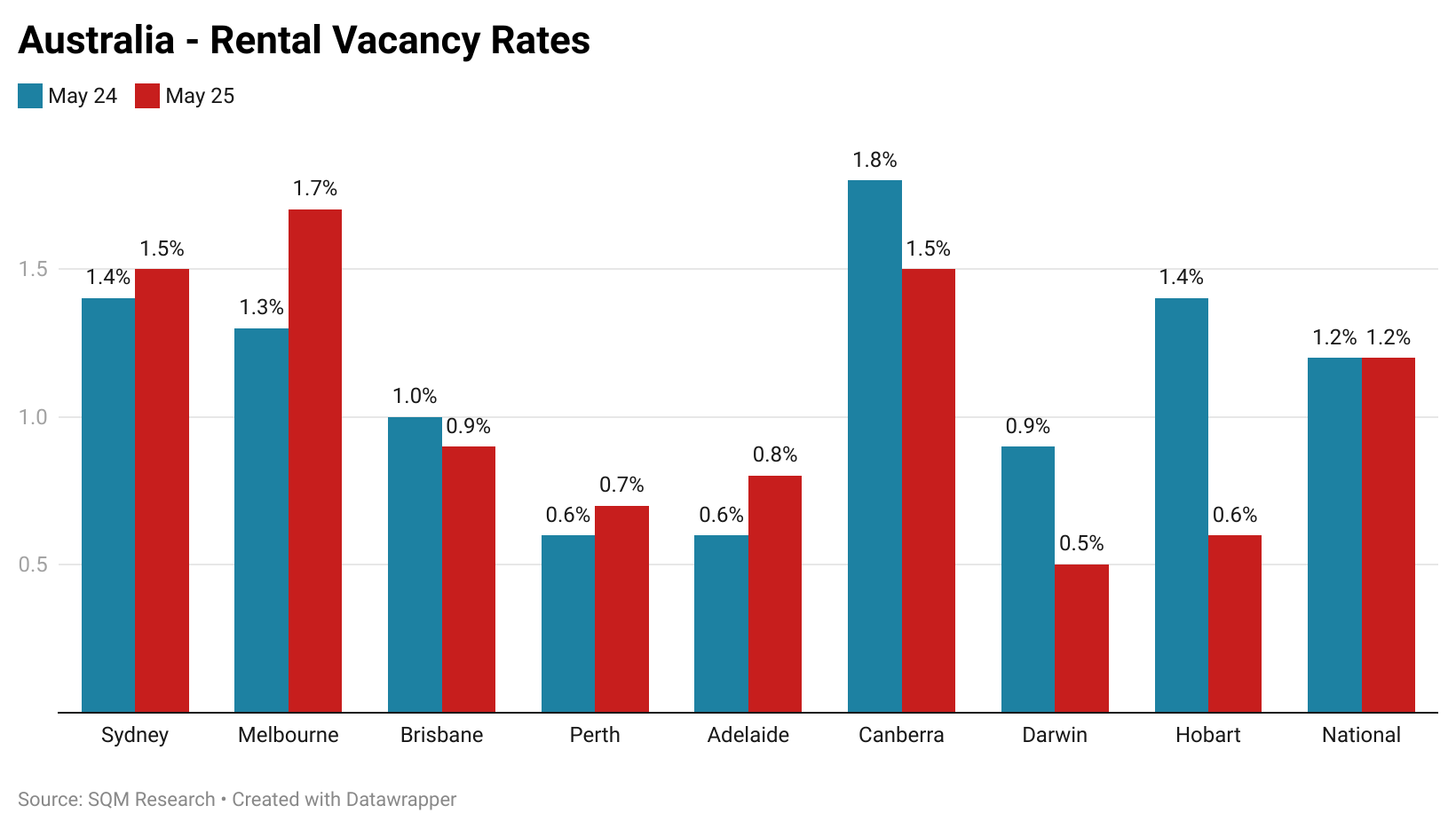With the release of the latest rental vacancy rate figures from SQM Research, it was revealed that, at a national aggregate level, zero progress had been made in addressing the nation’s rental crisis over the last 12 months.
While SQM’s rental vacancy rates are not seasonally adjusted, a comparison of the same month in the current year with the same month in the previous year allows for an apples-to-apples comparison to assess progress.

The federal government’s National Housing Supply and Affordability Council (NHSAC) projects that the nation’s housing deficit will continue to worsen every year until at least the middle of 2029, which marks the end point of their forecasts.
It’s also worth noting that the NHSAC figures are somewhat rudimentary and arguably don’t adequately take into account the changes in living arrangements and household demographics driving additional demand for housing.

HIA recently estimated that under normal economic conditions, the level of demand for dwelling completions stemming solely from domestic factors such as the natural population increase, knockdown rebuilds, changing household demographics, and other factors was around 100,000.
If this figure is used as a basis and then the additional demand stemming from net overseas migration is added, then the deficit becomes significantly larger, and even a basic extrapolation past the existing forecasts reveals a housing deficit that will grow into the 2030’s.
Meanwhile, a recent note from AMP’s Shane Oliver estimated that “the accumulated housing shortfall to be around 200,000 dwellings at least, and possibly as high as 300,000 dwellings.”
There is a perception that the more muted rise in asking rents in recent months is proof that the rental crisis has drawn to a close.
Unfortunately, it’s more of a case that you cannot get blood from a stone, particularly in an inflationary environment where real per capita consumer spending is falling at an aggregate level across the vast majority of age demographics.
In time, the rental crisis will eventually draw to a close, but it’s highly unlikely that will be because of underlying housing supply outstripping housing demand over a protracted period.
Instead, it will be because household formation rates will be further damaged and more Australians will be stuck in living arrangements that they don’t want to be in, just to keep a roof over their heads.

